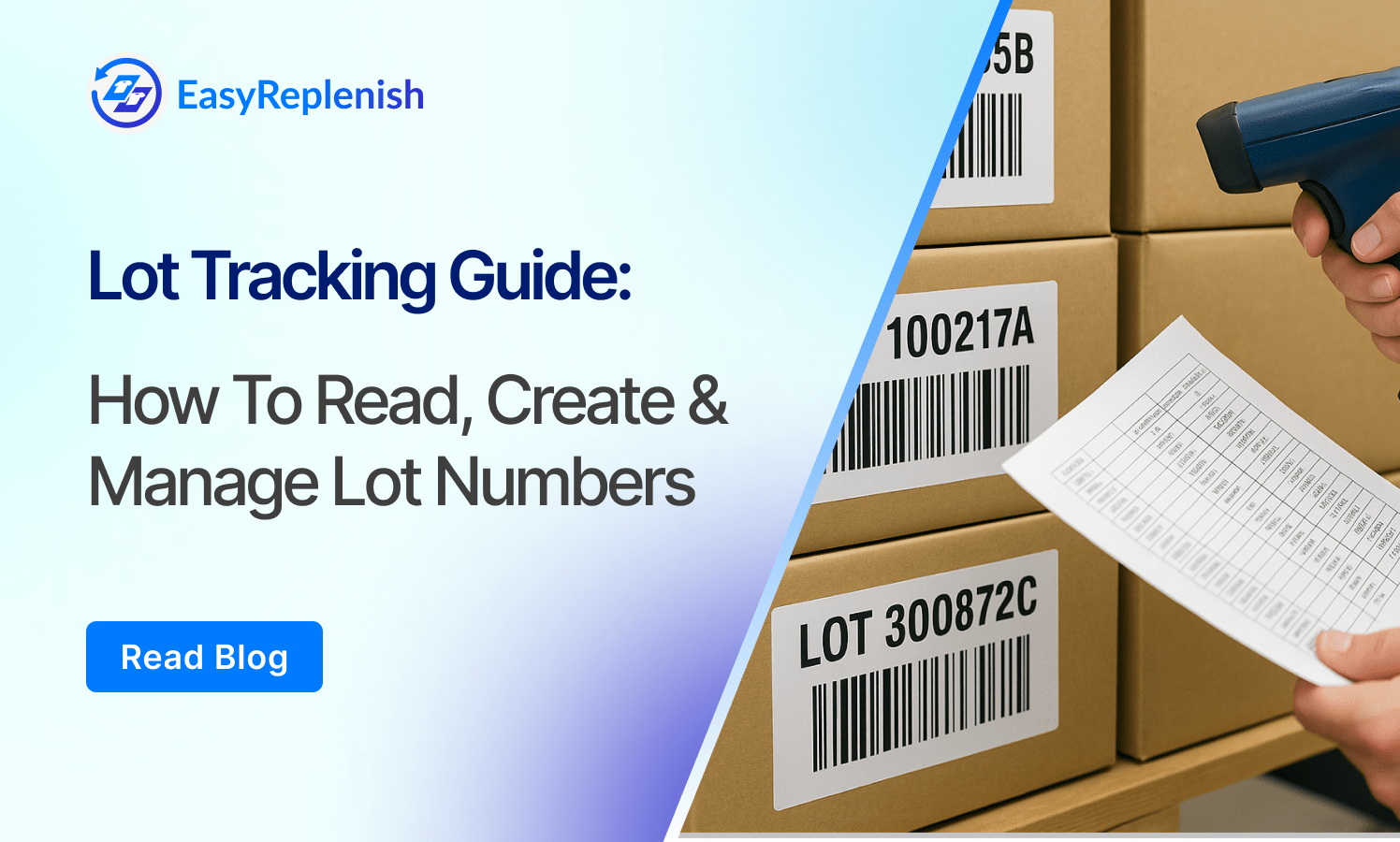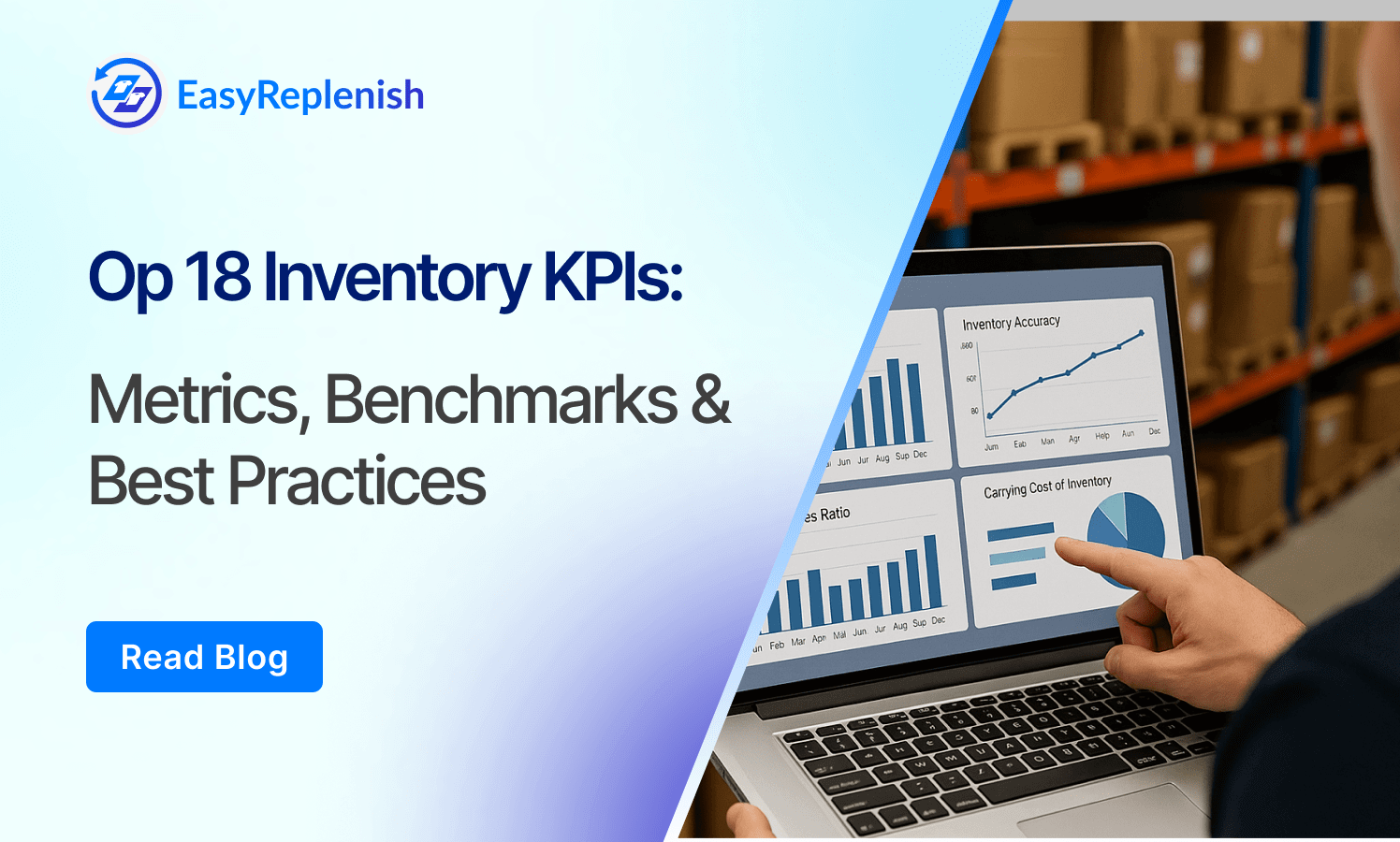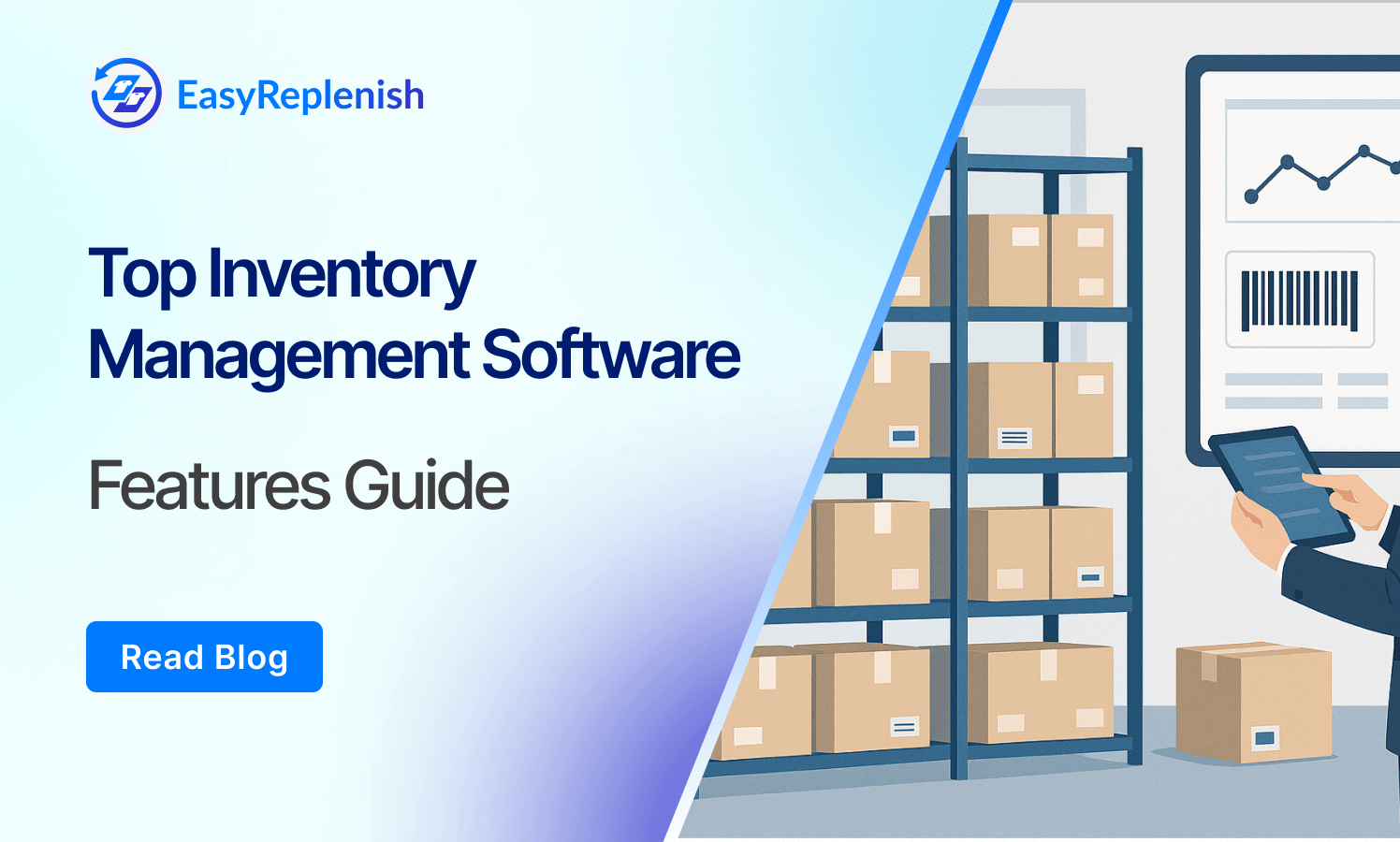Lot Tracking Guide: How to Read, Create & Manage Lot Numbers

Imagine this: a customer emails you saying the organic protein powder they bought last week tastes unusual. Without lot numbers, you’d have to check every order, every batch, and maybe even recall more stock than necessary. With lot numbers, you can instantly identify the exact batch, confirm if there’s an issue, and take action — all without disrupting the rest of your sales.
A lot number is a unique code assigned to a specific batch of identical products, usually produced or received together. In e-commerce, it’s more than just a label — it’s your safety net for quality control, expiry tracking, and rapid problem resolution. From beauty products and health supplements to electronics and packaged foods, lot numbers help online sellers stay compliant, protect customers, and maintain trust.
In this guide, we’ll break down what a lot number is, how it works for e-commerce brands, why it matters for your online store, and how to manage it efficiently across channels like Shopify, Amazon, and WooCommerce.
What Is a Lot Number in E-Commerce?
A lot number (also called a batch code) is a unique identifier assigned to a group of products that were manufactured, packaged, or received at the same time under similar conditions.
In e-commerce, lot numbers aren’t just for the factory floor — they play a key role in tracking stock from your supplier all the way to your customer’s doorstep. When you receive inventory, each lot number links those units to a specific shipment or production batch. This makes it possible to know:
- When and where the products were made or sourced
- Which customer orders contained items from that batch
- How long that batch has been in storage and if it’s approaching expiry
Example:
- You run an online skincare store. Your supplier ships 1,000 jars of face cream, all made in the same run, labeled LOT-0725-C3. Whether you sell those jars through Shopify, Amazon FBA, or both, that code tells you exactly which batch a jar came from.
For e-commerce brands, this traceability is critical for recalls, returns, expiry management, and supplier accountability — and it becomes even more important when you sell on multiple channels or store inventory in different warehouses
Lot Numbers vs. SKUs vs. Serial Numbers
In e-commerce, these three identifiers — lot numbers, SKUs, and serial numbers — are often used together, but they serve different and complementary purposes. Misunderstanding them can cause costly mistakes in inventory tracking, order fulfillment, and quality control.
1. SKU (Stock Keeping Unit)
- Purpose: An internal code created by the seller to organize and track products based on attributes like category, style, size, or color.
- Format: Usually alphanumeric, and completely customizable by the seller.
- Example: SKU-TSH-BLK-M might represent a black, medium-sized t-shirt in your catalog.
- E-commerce Role: SKUs appear in product listings, pick lists, and warehouse locations, making them essential for quickly identifying product variations.
- Key Point: SKUs are seller-specific — two different stores could use completely different SKUs for the same product.
2. Serial Number
- Purpose: A unique identifier for one single physical unit. No two items have the same serial number.
- Format: Often numeric, sometimes with a manufacturer code.
- Example: SN-987654321 might be etched on the back of a laptop.
- E-commerce Role: Used primarily for electronics, high-value goods, or products with warranties so the seller can trace the exact item purchased.
- Key Point: Serial numbers track an individual item, not a group of identical products.
3. Lot Number (Batch Code)
- Purpose: A shared code assigned to a batch of identical items produced, packaged, or received together under the same conditions.
- Format: Often contains a date, supplier code, or production run number.
- Example: LOT-0725-C3 could represent a batch of skincare products manufactured on July 25, 2025, in production line C3.
- E-commerce Role: Lot numbers make it possible to quickly locate, recall, or verify products from the same batch across warehouses and sales channels.
- Key Point: Lot numbers are batch-specific — hundreds of units can share the same code.
4. Quick Comparison Table
5. How They Work Together in E-Commerce
Imagine you sell a vegan protein powder on Shopify and Amazon:
- SKU: PROT-CHOC-1KG tells your team this is chocolate-flavored protein in a 1kg pack.
- Lot Number: LOT-0725-BB tells you it came from the July 25th production batch.
- Serial Number: Not applicable for this product (since it’s not a unique single-use item).
When a customer complaint comes in, the lot number lets you pinpoint exactly which batch they received, even if you shipped hundreds of orders across multiple sales channels.
Why Lot Numbers Matter for E-Commerce Brands
Lot numbers are more than just an operational detail—they’re a strategic control point in e-commerce that directly affects compliance, inventory accuracy, fulfillment efficiency, and customer trust. In a business where hundreds or thousands of SKUs can move through multiple warehouses and channels, not using lot numbers properly can lead to costly errors and legal risks.
1. Product Recalls and Compliance Protection
For brands selling regulated products (food, supplements, cosmetics, electronics), lot numbers are the fastest way to identify and remove specific batches from circulation.
- Example: A DTC skincare brand discovers a contamination issue in one batch. With lot numbers, they can instantly trace only the affected 1,200 units, rather than pulling all 20,000 units in stock.
- In the US, FDA and CPSC guidelines require traceability to the lot level for certain product categories. Without lot tracking, a brand may face full-scale recalls, legal penalties, or loss of selling privileges on marketplaces like Amazon.
2. Expiration and Shelf-Life Management
Lot tracking lets e-commerce brands manage FIFO (First In, First Out) or FEFO (First Expired, First Out) fulfillment.
- Why it matters: Selling expired goods not only risks returns and refunds—it can lead to regulatory fines.
- Example: A nutritional supplements brand can configure its WMS to always pick from the lot expiring soonest, ensuring no product waste and full compliance with health safety laws.
3. Multi-Warehouse Visibility
When you’re fulfilling from different locations, lot numbers give granular control over what inventory ships from where.
- This is critical when a certain batch can’t ship internationally due to regulations (e.g., a formulation variation allowed in the US but not EU).
- Lot numbers help prevent shipping a restricted batch to the wrong geography, avoiding customs seizures and compliance violations.
4. Faster Quality Control and Supplier Accountability
Lot numbers allow brands to pinpoint quality issues back to the supplier or manufacturing run.
- Example: An apparel brand spots defective stitching in a small batch of jackets. Lot tracking allows them to isolate the 500 affected units, link them to a specific manufacturer batch, and claim damages from the supplier—without disrupting other orders.
5. Customer Service Efficiency
When customers report an issue, CS teams can use the lot number from the packaging to quickly check if the product came from a problematic batch. This allows them to:
- Issue targeted replacements instead of blanket refunds.
- Communicate with transparency (“This was from Lot 248, which we’ve now fully recalled”).
Bottom line:
For e-commerce brands—especially those in regulated, perishable, or multi-warehouse operations—lot numbers are a profit-protection tool, a compliance safeguard, and a trust-building mechanism all in one. Ignoring them can mean unnecessary recalls, regulatory fines, and operational chaos.
How Lot Numbers Work in Online Selling
In e-commerce, lot numbers are more than just an internal tracking code — they’re a bridge between your warehouse operations, online storefront, and customer experience. When implemented properly, they integrate seamlessly with inventory management systems, fulfillment workflows, and even post-sale communication.
1. Assignment at Receiving
When products arrive from a manufacturer or supplier, each batch is assigned a lot number before being stocked.
- For private-label sellers, this might be done in-house after receiving goods from a contract manufacturer.
- For resellers or distributors, lot numbers provided by suppliers are entered into the warehouse management system (WMS).
This ensures that from day one, the system knows exactly which SKUs belong to which batch.
2. Linking Lot Numbers to SKUs in Your System
Modern e-commerce platforms and WMS software allow you to map lot numbers to SKU records.
- This enables FIFO (First In, First Out) or FEFO (First Expiry, First Out) picking rules for perishable or regulated goods.
- It also makes it possible to display “best before” dates on your product pages if needed — an important trust factor for food, supplements, and cosmetics.
3. Role During Order Fulfillment
When a customer places an order, your fulfillment software can automatically pull items from the correct lot based on your rules.
- For example, a skincare brand might always ship the batch with the closest expiry date first.
- If a defective batch is discovered, pickers can be instructed to skip those lot numbers entirely.
4. Post-Sale Tracking and Recalls
Because lot numbers are recorded at the order level in your system, you can instantly filter past sales by lot number.
- If you discover a defect in Lot #B2025-03, you can email or SMS every customer who bought from that batch — without affecting buyers from other lots.
- For marketplaces like Amazon, lot number records can help you respond quickly to safety compliance checks or customer claims.
5. Customer Service and Transparency
Some brands print the lot number directly on packaging and train their support team to ask customers for it during complaint calls. This allows customer service to:
- Verify if the product is part of a known issue.
- Offer targeted replacements without issuing broad refunds.
- Provide batch-specific storage or usage advice.
Example:
An artisanal coffee roaster selling online can trace a specific bag of beans back to the roast date, bean origin, and storage conditions — all from the lot number. This gives both operational control and a marketing advantage (“Roasted on June 14 from our Ethiopian Yirgacheffe lot”).
Best Practices for Managing Lot Numbers in E-Commerce
Effective lot number management is not just about regulatory compliance — it’s a core driver of inventory accuracy, customer trust, and operational efficiency in online selling. Here’s how to manage them strategically:
1. Standardize Your Lot Number Format
- Consistency across SKUs – Define a fixed format that includes critical identifiers such as product code, production date, and batch sequence (e.g., SKU-YYMMDD-Batch#).
- Machine-readable design – Use barcode or QR encoding so warehouse teams and fulfillment partners can scan and record lots instantly.
- Avoid duplicate numbering – Implement rules in your inventory or ERP system to prevent reuse, even after products expire or are phased out.
Why this matters in e-commerce: Standardization eliminates confusion between batches stored in different fulfillment centers or listed on multiple marketplaces.
2. Integrate Lot Tracking into Your Inventory Management System
- Real-time traceability – Link lot numbers to each sales channel so you can track which customer received which batch without manual lookup.
- Automated allocation rules – Use FIFO (First-In-First-Out) or FEFO (First-Expired-First-Out) for perishable products to ensure older or near-expiry lots are shipped first.
- Centralized view – Sync data across all warehouses, 3PLs, and marketplaces to avoid selling unavailable lots.
Pro Tip: Choose software that allows lot-level reporting so you can instantly see remaining quantities, sell-through rate per batch, and expiry risk.
3. Establish Clear Receiving and Storage Protocols
- Assign lots at receiving – Don’t wait until picking; tag products with lot numbers as soon as they arrive or are manufactured.
- Segregate by lot in storage – Use dedicated bin locations per lot to prevent mixing.
- Label visibility – Place labels on both outer cartons and individual sellable units if your products are shipped individually.
This reduces the risk of mispicks and simplifies product recalls if needed.
4. Train Fulfillment Teams on Lot Handling
- Channel-specific shipping rules – Marketplaces like Amazon have strict lot/expiry labeling requirements. Make sure your team understands them.
- Scanning discipline – Always scan lot numbers at pick and pack stages to maintain accuracy in the system.
- Cross-dock awareness – If you fulfill directly from suppliers to customers, ensure lot data is captured before shipment.
5. Conduct Regular Lot Audits
- Cycle counting by lot – Periodically verify that the physical quantity of each lot matches the system record.
- Expiry reports – Run monthly expiry reports to decide on discounting, promotions, or removal of soon-to-expire batches.
- Post-recall review – If a recall occurs, analyze how quickly you could isolate and remove affected lots — and improve the process if needed.
6. Maintain Regulatory & Marketplace Compliance
- Industry-specific rules – In food, supplements, cosmetics, and medical devices, lot traceability is legally required.
- Cross-border shipping – Some countries require lot and expiry information on customs declarations.
- Marketplace policies – Platforms like Amazon and Walmart enforce strict guidelines for products with lot control; violations can lead to delisting.
How to Generate Lot Numbers for Your Online Store
Creating an effective lot numbering system isn’t just about assigning random codes—it’s about designing a system that scales, integrates with your technology stack, and aligns with compliance or traceability requirements.
1. Decide on the Lot Number Structure
Your lot number format should balance traceability with ease of identification. Common structures include:
- Date-Based Codes: Often in YYMMDD or YYYYMMDD format, sometimes combined with product ID (e.g., PRD101-20250808).
- Sequential Codes: Simple incremental numbers (e.g., LOT-00123) — easier to manage but less informative without a database lookup.
- Hybrid Codes: Combine date, product code, and batch number for maximum clarity (e.g., TSH001-202508-05).
- Encoded Information: Some brands embed supplier ID, warehouse code, or shift number to streamline root-cause analysis if defects occur.
Pro Tip: Keep the format consistent across your catalog—changing formats mid-way can break traceability and confuse teams.
2. Choose Your Generation Method
Your generation method will depend on your inventory management setup:
- Manually in Spreadsheets: Feasible for small SKU counts, but prone to duplication and human error.
- Automatically via WMS or ERP: Most inventory systems can generate lot numbers upon receiving goods or manufacturing completion.
- E-Commerce Platform Plugins: Shopify, WooCommerce, and Magento have apps/modules to automatically assign lot numbers during stock intake.
- Barcode/RFID Systems: Generate and print lot-coded labels at receiving or manufacturing, ensuring every unit is tagged before it enters storage.
3. Align Lot Numbers With Fulfillment Workflow
The point at which you assign a lot number affects traceability:
- At Manufacturing/Production: Best for brands producing in-house or with close supplier collaboration.
- At Receiving in Warehouse: Works well for drop-shipped or third-party manufactured goods.
- At Order Picking: Rare but possible when products are assembled just before shipment.
4. Maintain a Central Lot Number Registry
Regardless of generation method, all lot numbers should be stored in a central database that’s:
- Searchable by product, date, and supplier.
- Integrated with sales orders for backward tracing (customer > lot number) and forward tracing (lot number > affected customers).
- Synced in real-time between e-commerce platform and inventory software.
5. Consider Compliance and Industry Standards
Some industries (food, cosmetics, supplements) require specific lot numbering rules:
- FDA / EU Regulations: Mandate lot codes for recall readiness.
- GS1 Standards: Useful for global supply chains to avoid duplication.
- ISO 9001 / GMP: May require documented lot control processes.
Even if you’re not legally required, adopting compliant lot codes can boost customer trust and operational discipline.
6. Automate for Scale
As your SKU count and order volume grow, manual processes break down fast. Automation tools can:
- Auto-assign lot numbers at receiving via barcode scanners.
- Sync lot data with Shopify/WooCommerce orders for shipping labels and invoices.
- Trigger expiry or recall alerts for affected lots.
Example: Lot Number Generation for a Fashion E-Commerce Brand
Brand: LuxeWear
Product: Women’s Summer Linen Dress – Blue
SKU: WLD-BLU-SUM24
1. Define the Lot Number Structure
LuxeWear decides to create a lot number format that is readable, scalable, and trackable:
Format: YYMM-BRANDCODE-PRODUCTCODE-BATCH#
- YYMM → Production month/year
- BRANDCODE → 3-letter brand code
- PRODUCTCODE → Shortened product SKU identifier
- BATCH# → Sequential batch number for that month
2. Example Lot Number
Let’s say LuxeWear produces 500 dresses in May 2025, split into two batches:
- First Batch (early May): 2505-LWX-WLD01-001
- Second Batch (late May): 2505-LWX-WLD01-002
Where:
- 2505 → Year 2025, May
- LWX → LuxeWear
- WLD01 → Women’s Linen Dress, internal product code 01
- 001 / 002 → Batch sequence
3. How It Works in E-Commerce Operations
- Production & Receiving:
Each batch is tagged with its lot number during manufacturing and recorded in the ERP/WMS. - Inventory Storage:
In the warehouse, items are stored by lot number so stock rotation (FIFO/FEFO) is easier.
Example: If batch 001 arrives first, it gets sold first to avoid older stock sitting. - Online Product Management:
The lot number is not always shown to customers but is tied to each order in the backend for tracking.
Example: If a customer buys a dress in June, the system logs whether it came from lot 001 or 002.
4. Benefits for the Fashion Brand
- Quality Control: If a stitching issue is reported in lot 002, LuxeWear can quickly recall or inspect that batch instead of all dresses.
- Seasonal Differentiation: Fashion brands often make minor tweaks each season; lot numbers help separate Summer 2024 vs Summer 2025 production runs.
- Regulatory & Compliance: In some markets (like the EU), textile products must have traceability in case of material defects or labeling errors.
- Sales Analysis: The brand can see which production batch sold faster or had fewer returns.
5. Realistic Workflow
- Design & Sampling Stage → Assign preliminary product code (WLD01).
- Mass Production → Manufacturer labels each carton with 2505-LWX-WLD01-001.
- Inbound Logistics → Warehouse scans lot numbers into inventory system.
- E-Commerce Orders → Shopify/WooCommerce backend records lot number against the order ID automatically via inventory integration.
- After-Sales → If a customer complaint arises, customer service can instantly trace the lot.
Lot Number Management for Multi-Channel Selling
For fashion e-commerce brands selling across multiple channels—such as their own Shopify store, Amazon, Zalando, and wholesale partners—lot number management is crucial to avoid inventory discrepancies, overselling, and compliance issues. Unlike single-channel selling, multi-channel setups amplify complexity because stock is moving in multiple directions simultaneously, often with different sales rules and return policies.
1. Why It’s More Complex in Multi-Channel Operations
- Fragmented Stock Visibility – If lot data isn’t synced in real-time across platforms, you risk selling the same item twice or losing track of specific batches.
- Different Data Requirements – Marketplaces like Amazon or Walmart may require lot or batch info for compliance (e.g., expiration dates for certain textiles, fabrics with special care requirements).
- Reverse Logistics Complexity – Returned items need to be re-tagged with their original lot number to preserve traceability, especially if items can be re-sold.
2. Best Practices for Multi-Channel Lot Tracking
- Centralize Lot Number Data in Your ERP or WMS
Use a system that integrates directly with all your sales channels. This ensures that when a SKU tied to Lot #2025-SS03 sells on Amazon, the same deduction is reflected instantly on Shopify and wholesale inventory. - Integrate Barcode or QR Scanning Across Fulfillment Points
Lot numbers should be tied to scannable codes, so warehouse staff can pick, pack, and ship while automatically updating the correct lot in your system—reducing manual entry errors. - Map Lot Numbers to Product Variants
For fashion brands, lot numbers often correlate with production runs, dye lots, or seasonal drops (e.g., "FW24-DYE01"). Mapping these to variant IDs in your product catalog prevents confusion when two visually similar items belong to different lots. - Use FIFO or FEFO Consistently Across Channels
- FIFO (First In, First Out) for standard apparel where age doesn’t affect quality.
- FEFO (First Expired, First Out) if your products have shelf-life considerations (e.g., treated fabrics, garments with embedded electronics).
- FIFO (First In, First Out) for standard apparel where age doesn’t affect quality.
- Automate Lot Assignment During Order Routing
If your OMS (Order Management System) automatically assigns orders to the oldest available lot across all channels, you’ll avoid stock imbalances and deadstock accumulation. - Set Marketplace-Specific Lot Compliance Rules
For instance:- Amazon FBA might require you to ship in single-lot batches for certain categories.
- Wholesale buyers may request lot certifications for fabric origin or dye composition.
- Amazon FBA might require you to ship in single-lot batches for certain categories.
Example: Fashion E-Commerce Multi-Channel Workflow
Scenario:
A sustainable denim brand sells via Shopify (D2C), Amazon (marketplace), and a wholesale distributor in Europe.
- Lot Number Creation:
Lot #2025-DNM01 → Indicates Year 2025, Denim, Production Run 01. - Inventory Allocation:
- Shopify: 1,200 pcs from Lot #2025-DNM01
- Amazon: 800 pcs from Lot #2025-DNM01
- Wholesale: 1,000 pcs from Lot #2025-DNM01 & Lot #2025-DNM02
- Shopify: 1,200 pcs from Lot #2025-DNM01
- Order Processing:
- OMS routes all Amazon orders to Lot #2025-DNM01 until depleted.
- Shopify pulls from Lot #2025-DNM02 once DNMI stock is low, ensuring no oversell.
- Wholesale is locked to pre-allocated stock per contract terms.
- OMS routes all Amazon orders to Lot #2025-DNM01 until depleted.
- Returns Handling:
Returned jeans are scanned back into the correct lot. If unworn, they’re restocked in the same channel to maintain lot consistency.
FAQs
Q1. Lot number vs. batch number—are they the same?
In most industries, the terms "lot number" and "batch number" are used interchangeably. Both refer to a unique identifier assigned to a specific group of products manufactured or processed under the same conditions. However, some industries make slight distinctions—“lot” often refers to a grouping for storage and distribution purposes, while “batch” may refer more specifically to a production run. For everyday business operations, they typically serve the same tracking and traceability function.
Q2. How do I decode or read a lot number?
Decoding a lot number depends on the numbering system your manufacturer or business uses. Many lot numbers incorporate production dates, product codes, and location identifiers. For example, a lot number like 230815A could mean the product was made on August 15, 2023 (23 = year, 08 = month, 15 = day), with “A” representing a production line. Always check your supplier’s documentation or your internal coding guide to interpret them accurately.
Q3. How do I implement lot tracking in my inventory system?
Implementing lot tracking starts with choosing inventory software that supports it, then creating a lot numbering system that fits your operational needs. Once defined, assign lot numbers at the point of manufacturing or upon receiving products from suppliers. The key is to ensure every unit is tied to its lot number throughout storage, sales, and returns. You’ll also need staff training and standardized workflows to keep data accurate and up to date.
Q4. Is lot tracking legally required for a product?
Lot tracking requirements vary by industry and location. In sectors like pharmaceuticals, food and beverage, and cosmetics, it’s often legally mandated to ensure consumer safety and enable recalls if needed. Other industries may not have legal obligations, but lot tracking is still considered a best practice for quality control, traceability, and customer trust.
Q5. Can I print barcodes for lot numbers to streamline tracking?
Yes, printing barcodes for lot numbers is a highly effective way to speed up inventory tracking and reduce manual errors. You can generate barcode labels that contain lot information and apply them directly to product packaging or storage bins. When scanned, these barcodes can instantly update inventory records in your system, making audits, sales, and recall processes far more efficient.
Q6. Do e-commerce platforms (e.g., Shopify, Amazon) support lot number tracking?
Some e-commerce platforms have built-in or app-based solutions for lot tracking. Shopify, for example, may require third-party inventory apps to manage lot numbers, while Amazon tracks batches for certain categories like food and supplements but not for all sellers by default. Before relying on a platform, it’s important to confirm whether native or integrated lot-tracking features meet your compliance and operational needs.
Q7. How do I create a lot number system for my store?
Creating a lot number system starts with deciding what information you want to embed—such as manufacturing date, supplier code, or product category. Choose a consistent format, like YYMMDD-PRODUCTCODE, to keep numbers logical and easy to decode. Automating number generation through your inventory management software can reduce errors and ensure every lot number is unique. Clear documentation of your system will help maintain consistency as your team and product range grow.


.png)





